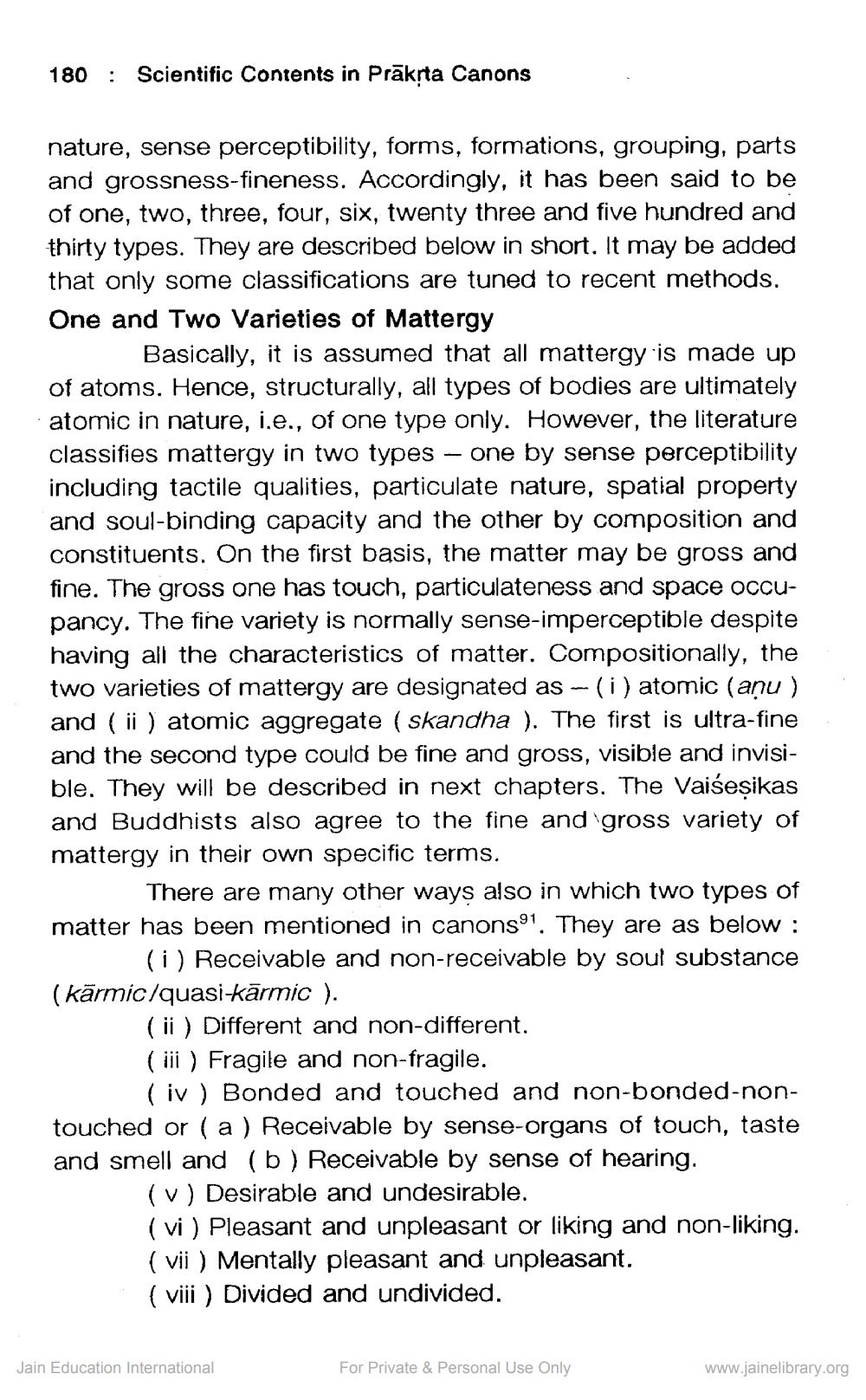________________
180 : Scientific Contents in Prākṛta Canons
nature, sense perceptibility, forms, formations, grouping, parts and grossness-fineness. Accordingly, it has been said to be of one, two, three, four, six, twenty three and five hundred and thirty types. They are described below in short. It may be added that only some classifications are tuned to recent methods. One and Two Varieties of Mattergy
Basically, it is assumed that all mattergy is made up of atoms. Hence, structurally, all types of bodies are ultimately atomic in nature, i.e., of one type only. However, the literature classifies mattergy in two types - one by sense perceptibility including tactile qualities, particulate nature, spatial property and soul-binding capacity and the other by composition and constituents. On the first basis, the matter may be gross and fine. The gross one has touch, particulateness and space occupancy. The fine variety is normally sense-imperceptible despite having all the characteristics of matter. Compositionally, the two varieties of mattergy are designated as ~ (i) atomic (aņu) and (ii) atomic aggregate (skandha ). The first is ultra-fine and the second type could be fine and gross, visible and invisible. They will be described in next chapters. The Vaiseṣikas and Buddhists also agree to the fine and gross variety of mattergy in their own specific terms.
There are many other ways also in which two types of matter has been mentioned in canons91. They are as below: (i) Receivable and non-receivable by soul substance (kärmic/quasi-kārmic ).
(ii) Different and non-different.
(iii) Fragile and non-fragile.
(iv) Bonded and touched and non-bonded-nontouched or ( a ) Receivable by sense-organs of touch, taste and smell and (b) Receivable by sense of hearing.
(v) Desirable and undesirable.
(vi) Pleasant and unpleasant or liking and non-liking. (vii) Mentally pleasant and unpleasant.
(viii) Divided and undivided.
Jain Education International
For Private & Personal Use Only
www.jainelibrary.org




